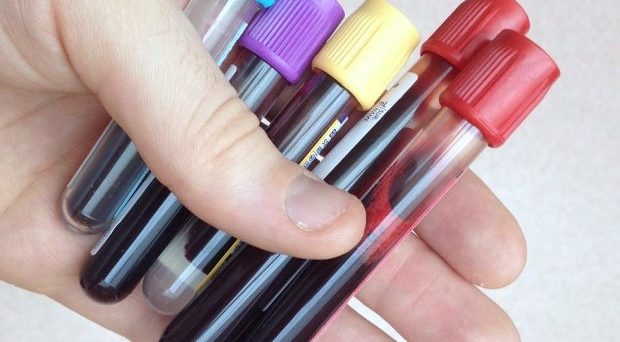
In the early 1990’s, systemic inflammatory response syndrome (SIRS) was an early way of detecting sepsis. The term SIRS, was born from the marriage of the American College of Chest Physicians (ACCP) and the Society of Critical Care Medicine (SCCM) in 1991 and her grandfather was Roger C. Borne.
Dr. Borne predicted the birth of SIRS by saying, “Words mean what I say they mean” citing Alice in Wonderland’s Humpty Dumpty, in this article. For several years SIRS’ life was filled with distress, receiving letters titled Dear SIRS, I’m sorry to say that I don’t like you… and Dear SIRS, I am afraid that you are not only useless, you are potentially harmful.
But the complicated story isn’t finished there. Another researcher confessed their love to SIRS in their article To SIRS with love…
What is SIRS?
SIRS is diagnosed when patients meet any two of four parameters: tachypnea (respiratory rate > 20 breath/min), tachycardia (heart rate > 90 beats/min), hyperpyrexia (body temperature > 380 C) and leukocytosis (white blood cell count > 12000 cells/mm3). A point of contention, therefore, has been that SIRS diagnosis is too sensitive to define sepsis. It was joked that running after a bus with the flu would easily meet the criteria, would that be sepsis?
Of course, chasing a bus is not infection. The most important point, regardless of its sensitivity or specificity, is that SIRS taught us “inflammation” is a non-specific response to both infectious (sepsis) and non-infectious (e.g. trauma or pancreatitis) insults that delimits and repairs the damage to cells and tissues incurred by such insults.
Based on our understanding of innate immunity, we know that a body is fighting against insults by recognizing the signs of SIRS. Unlike local signs of inflammation in response to bacteria or injury such as rubor (redness), tumor (swelling), calor (heat) and dolor (pain), SIRS is a warning sign of a looming crisis if it continues for several days.
SIRS controversy
Overcoming hardship, SIRS has grown into adulthood and been recognized as a robust syndrome caused by infection, as well as non-infectious insults. However, SIRS is once again facing a crisis; the SCCM has split from the ACCP and together with the European Society of Intensive Care Medicine (ESICM): they have come up with Sepsis-3 and quick sequential organ failure assessment (qSOFA) (JAMA 2016; 315:801-810).
SIRS has again been criticized with the same phrases that were used 20 years ago: that SIRS is unhelpful in diagnosing sepsis because there are too many hospitalized patients with SIRS that never develop infection and never experience adverse outcomes (poor discriminant validity). It must also be added that one in eight patients with infection do not meet the SIRS criteria (poor concurrent ability).
It has also been said that SIRS is not the only child of sepsis, as we learned when we heard about the existence of another child of sepsis: anti-inflammatory response syndrome. However, the grandfather of SIRS, Dr. Bone, predicted the birth of a brother to SIRS called compensatory anti-inflammatory response syndrome (CARS) 20 years ago.
According to Dr. Bone, Sir Isaac Newton, sepsis, SIRS, and CARS, for every action there is always an opposed and equal reaction; or, the mutual action of two bodies upon each other are always equal, and directed to contrary parts. Critics of SIRS have been inconsistent in their attitude as well, stressing that SIRS still remains useful for the identification of infection. If so, why then is SIRS useless for identifying sepsis, a severe infection?
Redefining sepsis
Although many critical care societies worldwide have endorsed a new definition of sepsis, Sepsis-3, the ACCP is yet to agree on a definition. In fact, a fellow of the ACCP stated that the new sepsis criteria, Sepsis-3, is a change that we should not make.
He correctly pointed out that the statement “SIRS is absent in one of eight patients with infection and organ dysfunction” should be rephrased as “Seven in eight patients with critical organ dysfunction are associated with SIRS”.
The American College of Emergency Physicians (ACEP), another major society involved in sepsis, claimed that the SCCM had redefined sepsis without emergency medicine input. They also mentioned that nearly two-thirds of all admitted septic patients present through the Emergency Department. This raises the question why did the SCCM and ESICM not consult the opinion of emergency physicians?
So what is the truth about SIRS? A major point to be considered in the discussion of new sepsis criteria and SIRS is the differentiation between diagnostic criteria for sepsis and the concept of SIRS itself.
SIRS might indeed be too sensitive to diagnose sepsis, and as such, it would be better to exclude SIRS from the sepsis diagnostic criteria entirely. It should be emphasized, however, that removal of SIRS from the diagnostic criteria does not equate the end of SIRS as a concept.
SIRS has been, and will continue to be, a robustly established concept to describe a systemic innate inflammatory response to diverse insults that injure our bodies. Through SIRS, we can recognize that we are resolutely fighting these insults. Therefore, SIRS is indeed not yet dead, but it will remain permanently active in the world.
Comments